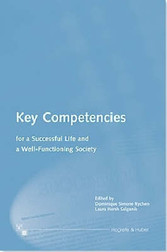Search and Find
Service
Analytic benefits of an international approach (p. 142-143)
It is possible to make the case for undertaking international comparative assessments of adult competencies on the basis of the improvements they will bring in the richness of data and the resulting increase in analytic power. While the importance of considering competencies in light of broad societal objectives such as sustainable democratic development and personal well-being and thus the need to explore broader measures of success and well-being has been acknowledged (see OECD, 2001d; chapter 4), past and current assessments have focused mainly on the economic returns of competencies. From this perspective, the primary objective of assessing competence is to better understand how it influences the productivity of workers in labor markets, where productivity is measured by the wages earned at various skill levels. As noted by Heckman and Vytlacil (2000), identification of the true impact of skill or competence on the productivity of workers is constrained by a lack of variance in key variables. Specifically, current data sets do not yield sufficient numbers of observations in the tails of distributions, which would include highly skilled individuals with little education and poorly skilled individuals with high levels of education. Similar analyses of the IALS data by the author and others (e.g., Murray, 1995; Kerckhoff, Dietrich, & Brown, 2000) further demonstrate in several important ways both the overall benefits of international assessments and the need for data from countries that represent a wider variety of social and economic conditions.
Although most current analyses generally rely on measures of educational attainment as proxies for human capital or skill, it is clear they are very poor proxies in statistical terms, in that direct measures of skills identify significant numbers of individuals who possess more (or less) skill than their educational level would suggest. Analysis of the IALS data demonstrates that measures of educational attainment fail to capture large differences in skill attributable to differences in the level of skill acquired in youth (through differences in the quality of preschool experience and of education at the primary, secondary, and tertiary levels) and in adulthood (through processes of skill gain and loss). The data show that these differences vary significantly across countries, within countries, and over time. Data from PISA and the IEA’s Trends in Mathematics and Science Study (TIMSS)2 reinforce this conclusion by revealing large variations in average performance and in the distribution of performance in what had previously been assumed to be a homogeneous group of developed countries, at least with respect to educational output. This implies that any analyses using educational attainment as a proxy for human capital will produce biased estimates and that the economic impact of skill on wages will be underestimated.
Further, analyses of the IALS data reveal large variations in the relative economic returns on skill from country to country. These differences can be interpreted as evidence that returns are attenuated (or amplified) by the relative conditions of supply and demand operating in a particular labor market. This seems to operate through three mechanisms – through initial selection (where credentials dominate as a screening device in conditions of excess skill supply); through higher promotion rates for workers with high skill levels (a positive effect); and through higher layoff rates for lower skilled employees (a negative effect). The classic example of the effect of supply and demand on economic returns on skill is seen in Sweden, the country that had the highest observed mean level of literacy skill in IALS, with a low level of variance around this mean. In Sweden, the wage return on literacy skill is very small. This does not imply that literacy skill is not economically important in the Swedish economy, rather that Swedish employers have a large supply of skill and find little difference upon which to differentially reward employees. The implication for assessment is that the sample of countries in any new assessment must contain a range of supply- and-demand conditions, specifically those where skill demand is high and supply is short, those where skill demand is weak and supply is strong, and those where supply and demand seem to be in rough equilibrium. Such heterogeneity can only be achieved through the inclusion of non-OECD countries.
All prices incl. VAT













